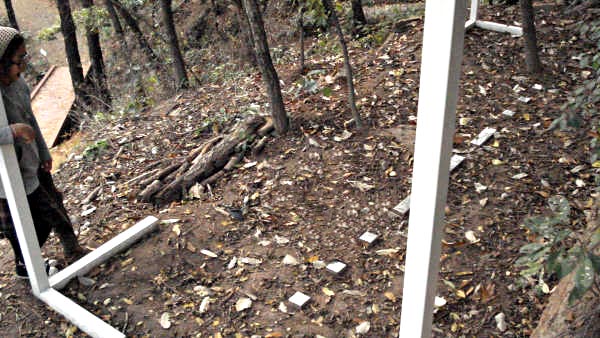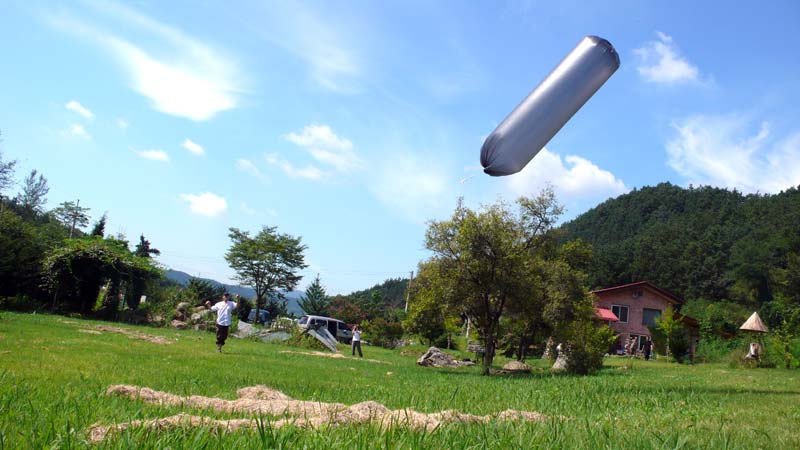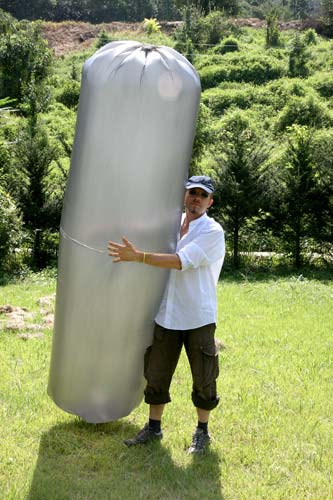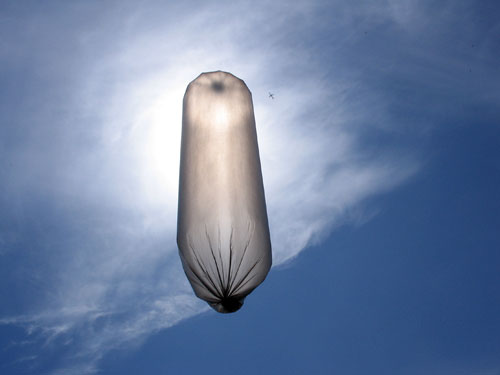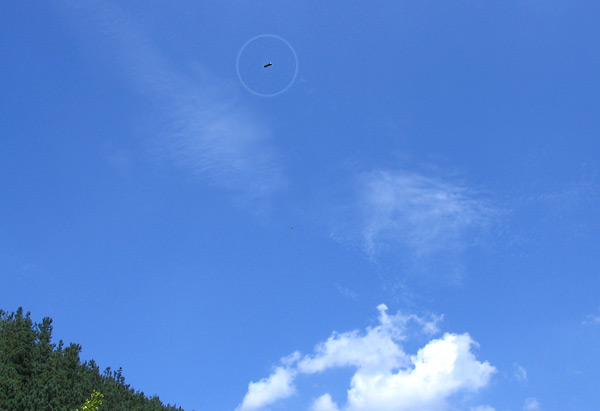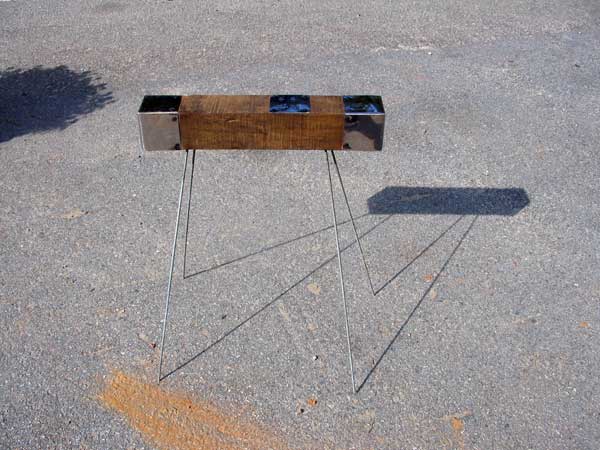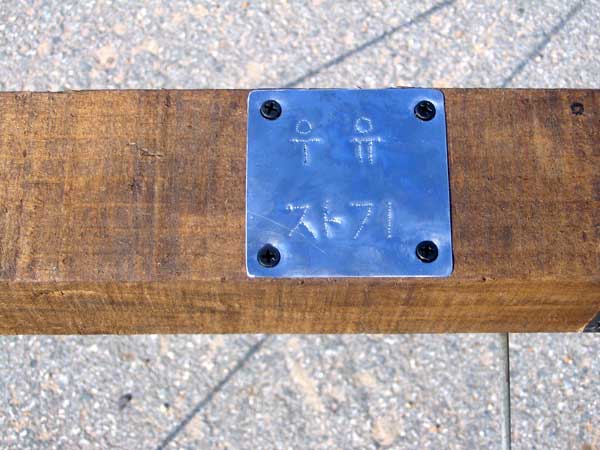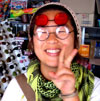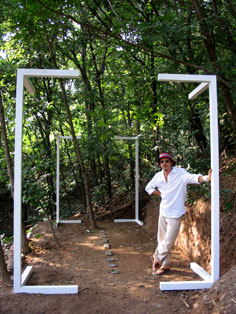|
John Grande
(Canada) interview with HLX
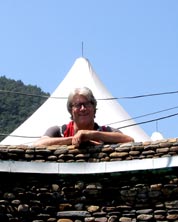
.............John
D Grande, photo: HLX
Nature
Container / Uncontained Nature - an interview with John Grande
JG: Hael Yxxs,
you are in the process of making a form that truly provides a contrast
to the natural site you have chosen on Mount Yeonmisan for the Geumgang
Nature Art Biennale in Korea. This is a work comprises steel forms like
the outline of a standard shipping container of our era.!
HY: Yes. You
are right. My project references the original size of a standard
shipping container used in world trade shipping. It measures 6.1 metres
long, by 2.4 metres wide, by 2.6 metres high. This cubic measurement is
the most standard size of a container used for transporting goods in shipping
for Asia, North America, and Europe. For my work with Yatoo, I have only
created the edges of the container. So I am giving very only the minimum
amount of information. The viewer or visitor has to construct or fill in
the rest.
JG: So it
is a kind of sculptural sketch then.
HY: On the
ground there will be an SOS sign. I will create this SOS out of mirrors.
So the idea is that water from the skies will reflect on these ground placed
mirrors. This model is of one of those huge containers used in the water,
on our oceans, or on land. On the one hand, what is inside the container
defines our living standard and on the other side, it is what destroys
nature. So you enter into my container through nature and then you have
a little open space and you see these SOS signs on the ground. It gives
you a place and a chance to think about the two sides of this dilemma –
of our relation to nature.
JG: And the
title you have given the piece “ Twenty Foot Equivalent Unit “ again
references quantification, measurement. So being in nature as it is,
your highly stylized, tensile construction sparks ambiguous feelings about
nature and manufacture, and at one and the same time.
HY: Yes. And
when you are inside the structure, you become aware of the real volume
that such a container actually occupies.
JG: When one
sees “ Twenty Foot Equivalent Unit “ in this forest interior, it becomes
a landscape vista that highlights the huge scale of these containers, and
inadvertently the economies of scale they actually play a role in as icons
of the shipping and world trade industry.
HY: Nature,
and this mountain setting is a good place for this container form. The
container painted white as it is, stands out, and is an absolutely uncommon
thing to see in the forest. The dimensions of the forest on Mount Yeonmisan
are quite small. And you have a large container space within this forest.
Looking at it, you can imagine that thousands of these are moving around
the world every day. It is amazing to think of this, of these huge volumes.
JG: This sculpture
integrates quite well into the landscape of Mount Yeonmisan. It fits quite
well. The white painted lines of your container are so linear and clear
and readable. As an artwork, it provides a sharp contrast to the
flow of the topography, the landscape, the trees and hillside forms, and
this makes it very visual, phenomenal.
HY: When you
stand below the sculpture on the pathway stairs that lead up to it, it
is like a field view you might have in a camera’s viewfinder.
JG: Again
this allusion to quantification and measurement that the container likewise
suggests. The camera field view quantifies the landscape and the space
in nature, or for that matter whatever you are photographing. The container
also quantifies, in terms of its cubic space. And so this piece could be
a metaphor for culture and nature – the relation between the natural and
the manufactured.
HY: Yes. This
container object I have made at Yatoo stands for just one very small pixel
of the total world trade traffic.
JG: Did you
make an earlier piece at Yatoo?
HY: Yes. In
1995 I made “ Flying Moving Hand “. It was a white rectangular swing. As
it was a light white structure, it had the appearance of being suspended
from the clouds. As a work of art it is so very different and absolutely
contrasts “ Twenty Foot Equivalent Unit “.
JG:
Yes! The open container is solid and structural, but most definitely
on this earth.
HY:
I do like linear structures, and straight lines very much.
JG: People
who live in nature will often like straight lines, sharp clean elements
that contrast the environment of nature. People who live in the cities,
on the other hand, like curved forms, organic shapes. How ironic!
HY: Korea
is a great culture in terms of its understanding of our relation to nature.
JG: Do you
feel that Yatoo has contributed to your production in terms of providing
these opportunities to experiment, to create and realize your sculptural
ideas in nature?
HY:
I had a very different idea originally when I conceived the piece. I wanted
to make a structure out of bamboo in a field. When they gave me this place
to work, and changed the location where I was to work, I had to completely
change my idea as a proposition. This work is about the contrasts between
nature and rationality.
JG: Humans
always like to organize, to change things, and we seldom leave things as
we are…. I guess this is a part of the human dilemma.
HY: This place
where I have set up my nature container is like a church in the woods.
It looks like it has been standing on this ground for a very long time…
JG: The way
you have left trees within the structure builds a dynamic. The interface
between living trees, plants, earth and the structure itself, your earthy
SOS message all makes it work. The message your Twenty Foot Equivalent
Unit communicates is very much about what we as humans are doing to the
earth. It is obvious we have to evolve our ways of living to harmonize
with the earth. It’s an urgent message.
Thank you
so much.
.
. |
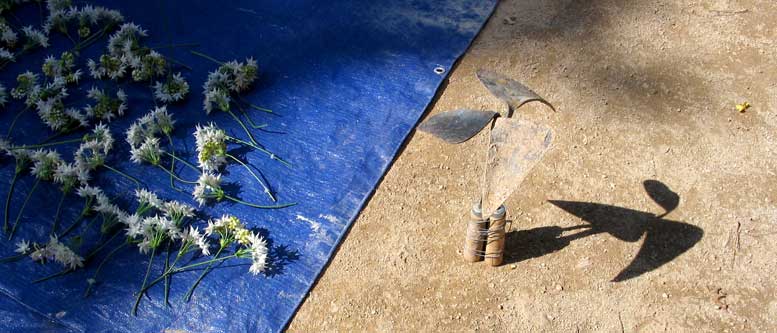
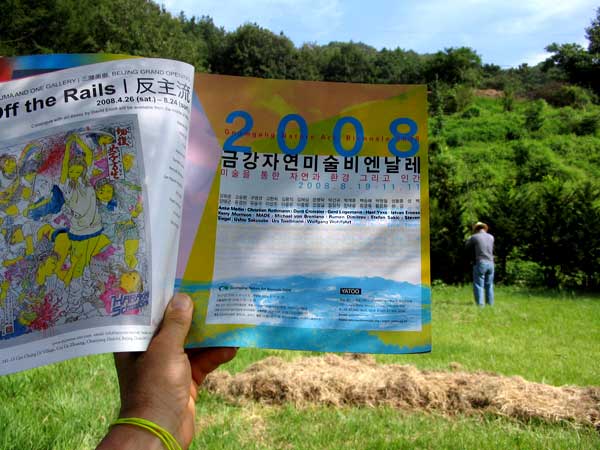
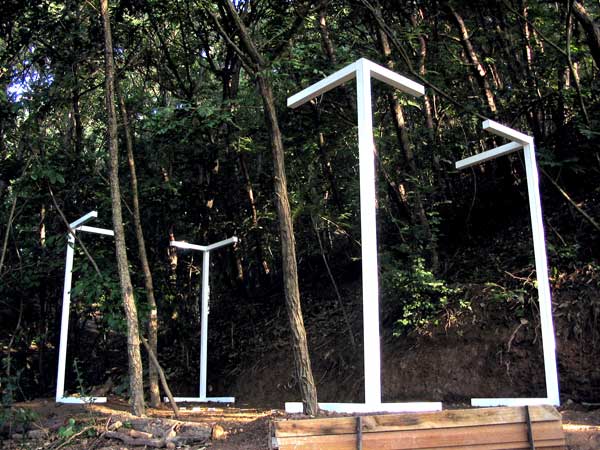
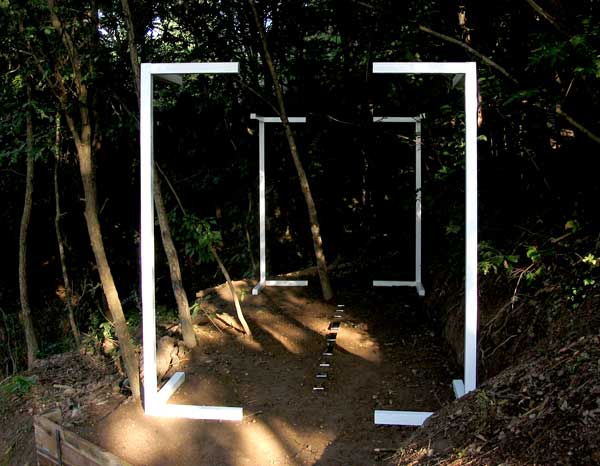
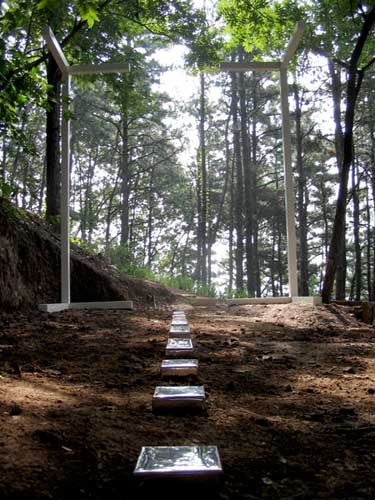
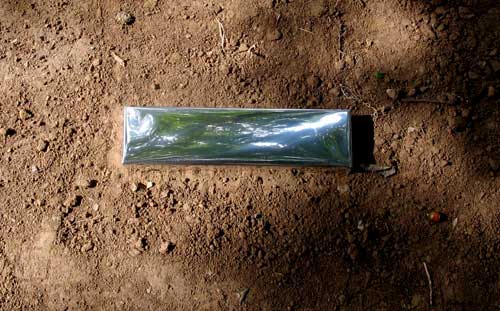
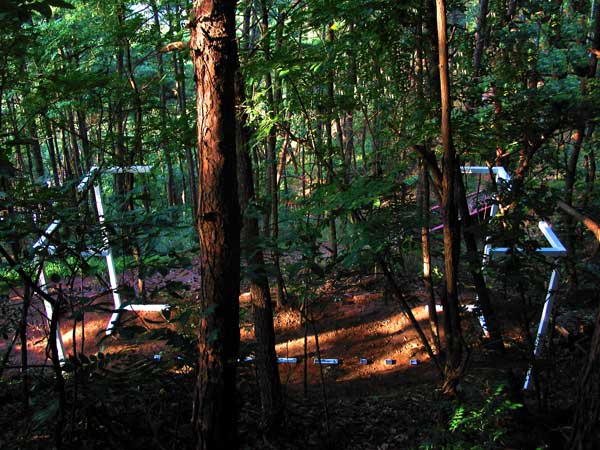
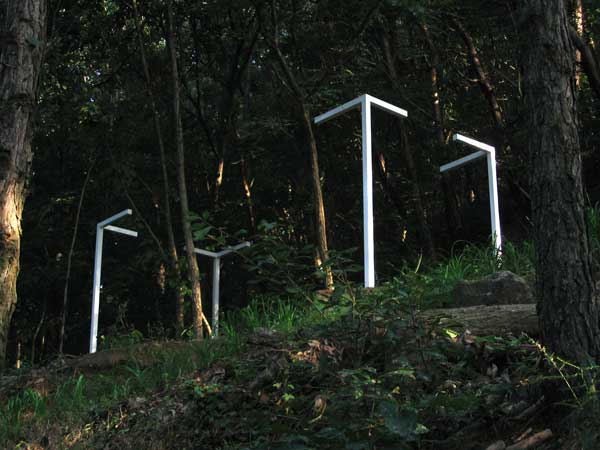
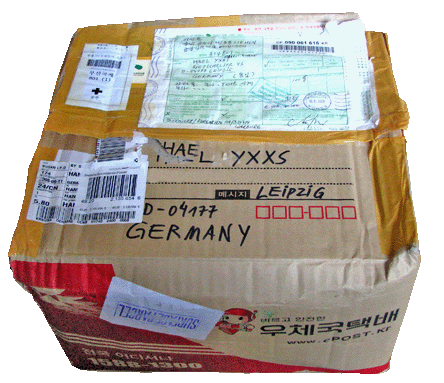
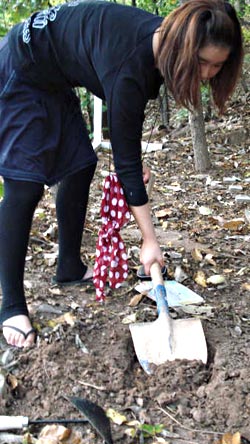 .......................................
.......................................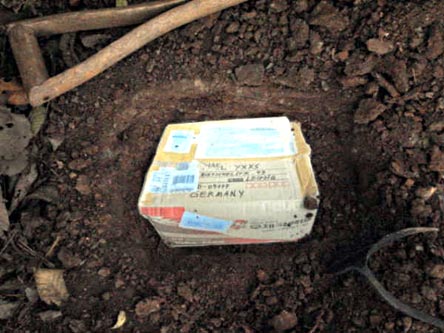
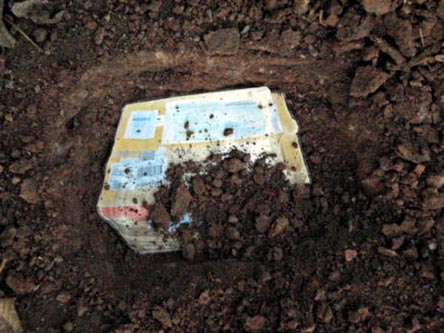 .....
.....
